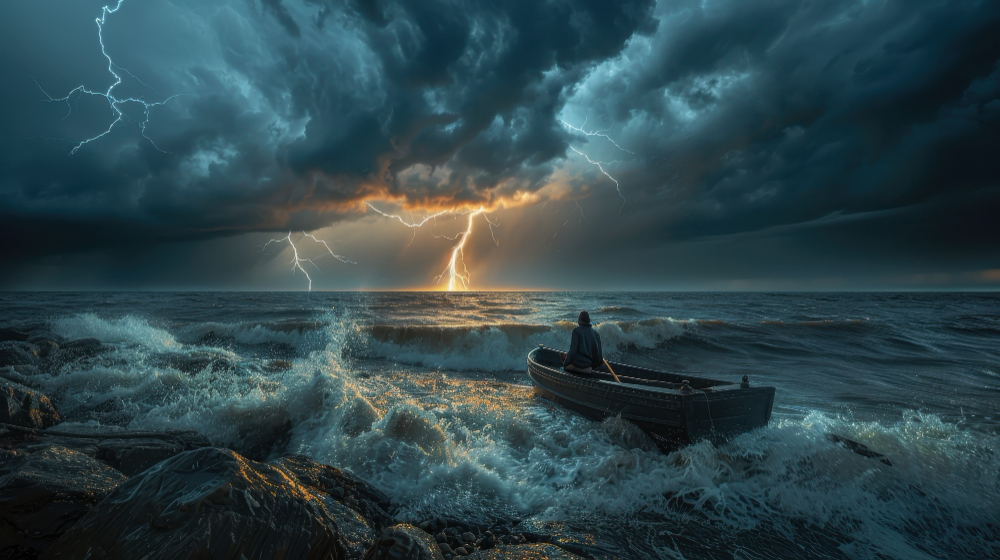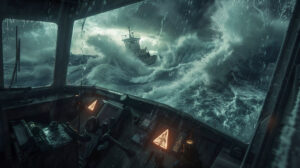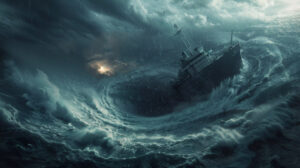
Storm-Revealed Shipwrecks: How Hurricanes Uncover Lost Maritime Treasures

Each year, hurricanes and tropical storms reshape the coastlines of the US East Coast and Bermuda, often causing major damage. But for explorers and history lovers, these storms do something extraordinary: they reveal storm-revealed shipwrecks — ancient wrecks and long-lost treasures hidden beneath sand and sea for centuries.
From North Carolina’s Outer Banks to the coral reefs of Bermuda, violent weather patterns are exposing historic ship remains, maritime artefacts, and sunken cargo. What’s more, you don’t have to be a pro diver to find them — many storm-revealed shipwrecks are now being discovered by everyday beachgoers, snorkelers, and hobbyist fossil hunters.
Where Are These Shipwrecks Being Found?
⚓ North Carolina: Graveyard of the Atlantic
With more than 1,000 known shipwrecks, the North Carolina coastline has earned the title “Graveyard of the Atlantic.” These include Civil War blockade runners, German U-boats, and colonial merchant ships.
After major storms, it’s not unusual for parts of ships to surface. One such example is the Corolla Wreck, found when strong winds exposed it from under a sand dune. Gold coins found nearby date it to the early 1600s, possibly making it the oldest known shipwreck in the state — older than even Blackbeard’s Queen Anne’s Revenge, which sank in 1718 and was discovered in 1996.
Internal link suggestion: Read more about Queen Anne’s Revenge on our blog (replace with real URL once you have it)

Storm-Revealed Shipwrecks: How Hurricanes Uncover Lost Maritime Treasures
Bermuda: A Sunken Treasure Trove
Bermuda is surrounded by coral reefs that have sunk more than 300 ships over the past 500 years. Many believe this to be part of the infamous Bermuda Triangle mystery.
According to Philippe Rouja, Bermuda’s Custodian of Wrecks, storms often shift entire wrecks, exposing artefacts hidden for centuries. Divers during hurricane season often spot pieces of storm-revealed shipwrecks like old anchors, bronze nails, and cargo items. Recently, even a casual lobster diver stumbled upon a ship from 1950 named Justice.
Pro Tip: Visit Bermuda in autumn. It’s hurricane season and also the slow tourist season, so dive tours are more flexible. Check out EcoDive Bermuda for customized trips to lesser-known sites.
External link: EcoDive Bermuda
️ No Scuba? No Problem
Not all storm-revealed shipwrecks are underwater. Many historic wrecks wash up along the shoreline after strong weather events. Beachcombers in North Carolina and South Carolina frequently report timber frames, anchors, and artefacts after hurricanes.
Stephen Atkinson from North Carolina’s Underwater Archaeology Branch confirms that even casual walkers have made major discoveries. “People walk their dog and find ship parts sticking out of dunes after a storm,” he explains. Beachgoers are encouraged to report any such findings to the state archaeology department. You may even have your name recorded in the state’s wreck database, like the man who found the “Scott Smith Wreck.”
Internal link suggestion: Check our beginner’s guide to beachcombing after a storm (insert actual internal article)
Fossils, Not Just Ships
In South Carolina, storms reveal more than shipwrecks — they also uncover Ice Age fossils. Due to rapid coastal erosion, fossilized remains are often discovered just after major storms.
Companies like Charleston Fossil Adventures offer fossil-hunting tours led by real paleontologists. After a recent storm, they found a monk seal arm bone dating back tens of thousands of years.
External link: Charleston Fossil Adventures
Search Tip: Look for dense shell or gravel patches on the beach. That’s where heavier objects like fossils and artefacts tend to gather.
Citizen Archaeologists: How You Can Help
Several US states now encourage regular people to become “Citizen Archaeologists”. North Carolina, for instance, has a reporting program, and Florida is testing QR codes on timber pieces. These codes help archaeologists track wreck fragments moved by storms.
Public involvement is key. Even photos of small objects — like buttons, coins, or old tools — help researchers identify shipwreck origins and monitor coastal erosion.
Tech & Treasure: The Future of Wreck Hunting
Modern tools like underwater drones, scanning sonar, and AI mapping have made shipwreck hunting more accurate. As climate change increases the intensity of hurricanes, more storm-revealed shipwrecks are expected to surface.
One of Bermuda’s most iconic discoveries was the Tucker Cross, a gem-encrusted relic found in 1950 — and famously stolen in the 1970s before Queen Elizabeth could view it.
Still missing is the 100lb bronze rooster masthead from the Cristobal Colon, lost during early salvage operations. “If someone found that, it would be huge,” says Rouja.

Final Thoughts
Storms may damage coastlines, but they also uncover hidden pieces of maritime history. From Bermuda to the Carolinas, these storm-revealed shipwrecks offer a once-in-a-lifetime opportunity for anyone to play a role in rediscovering the past.
So next time you walk a beach after a storm, keep your eyes open — the next great treasure might be buried just beneath the sand.


















